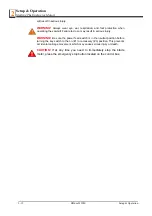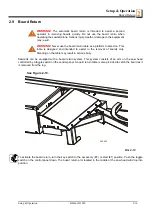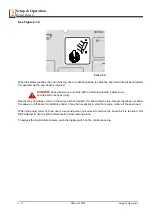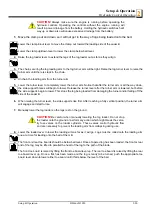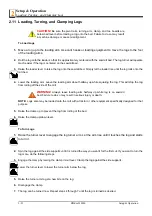
Setup & Operation
Edging
2
2-29
HDdoc012020
Setup & Operation
9.
Lower the toe boards, if they were used. Use the hydraulic levers to release the clamp and engage the log
turner. Turn the log 90 or 180 degrees. Make sure the flat on the log is placed flat against side supports if
turned 90 degrees. Make sure it is placed on bed rails if turned 180 degrees. If the log was turned 90 degrees
and you are using toe boards to compensate for taper in the log, raise the front or rear toe board again on the
second side of the log until the heart is parallel with the bed.
10.
Repeat the steps used to cut the first side of the log until the log is square. Cut boards from the remaining cant
by adjusting the blade height for the thickness of boards that you want.
Example:
Remember that the blade cuts a 1/16 - 1/8" (1.6-3.2 mm) wide kerf. If you want 1" (25.4 mm) thick
boards, lower the carriage 1 1/16 - 1 1/8" (27-28.6 mm) for each board.
2.17 Edging
The following steps guide you through edging boards on the Wood-Mizer sawmill.
1.
Raise the side supports to 1/2 the height of the flitches, or the boards that need to be edged.
2.
Stack the flitches on edge against the side supports.
3.
Clamp the flitches against the side supports halfway up the flitch height. (Wider flitches should be placed to the
clamp side. When they are edged, flip them over to edge the second side without disturbing the other flitches
or without having to pull them from the middle of the stack).
4.
Adjust the blade height to edge a few of the widest boards.
5.
Loosen the clamp and turn the edged boards over to edge the other side.
6.
Repeat steps 2-4.
7.
Loosen the clamp and remove the boards that have good clean edges on both sides. Clamp the remaining
flitches and repeat steps 2-5.
2.18 Blade Height Scale
See Figure 2-22.
The blade height scale is attached to the carriage head frame. It includes:
a blade height indicator
an inch scale
a quarter scale

